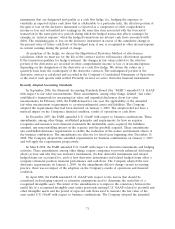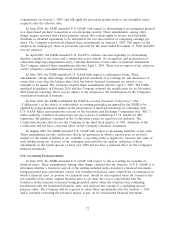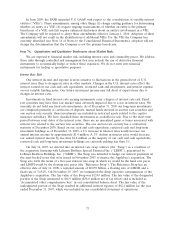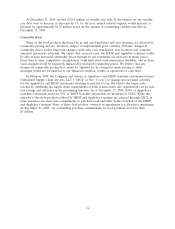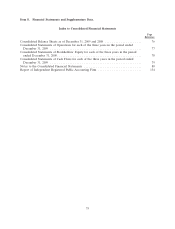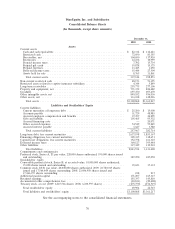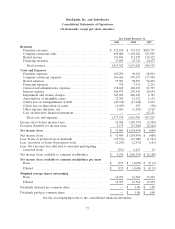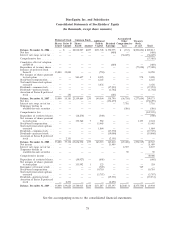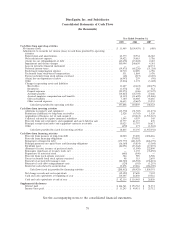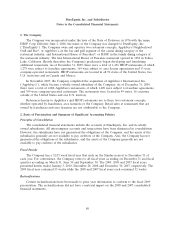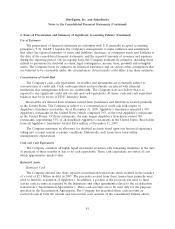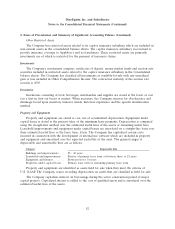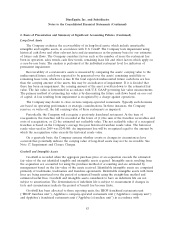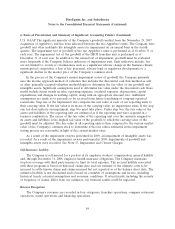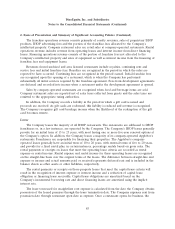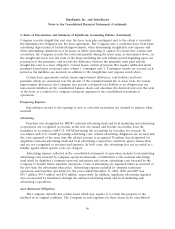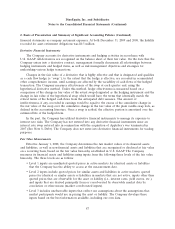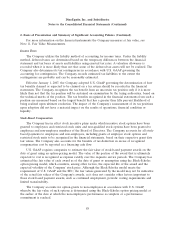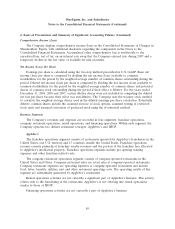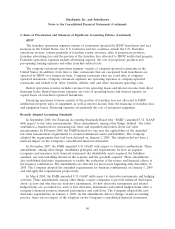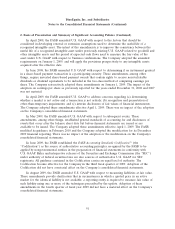IHOP 2009 Annual Report Download - page 100
Download and view the complete annual report
Please find page 100 of the 2009 IHOP annual report below. You can navigate through the pages in the report by either clicking on the pages listed below, or by using the keyword search tool below to find specific information within the annual report.DineEquity, Inc. and Subsidiaries
Notes to the Consolidated Financial Statements (Continued)
2. Basis of Presentation and Summary of Significant Accounting Policies (Continued)
Use of Estimates
The preparation of financial statements in conformity with U.S. generally accepted accounting
principles (‘‘U.S. GAAP’’) requires the Company’s management to make estimates and assumptions
that affect the reported amounts of assets and liabilities, disclosure of contingent assets and liabilities at
the date of the consolidated financial statements, and the reported amounts of revenues and expenses
during the reporting period. On an ongoing basis, the Company evaluates its estimates, including those
related to provisions for doubtful accounts, legal contingencies, income taxes, goodwill and intangible
assets. The Company bases its estimates on historical experience and on various other assumptions that
are believed to be reasonable under the circumstances. Actual results could differ from those estimates.
Concentration of Credit Risk
The Company’s cash, cash equivalents, receivables and investments are potentially subject to
concentration of credit risk. Cash, cash equivalents and investments are placed with financial
institutions that management believes are creditworthy. The Company does not believe that it is
exposed to any significant credit risk on cash and cash equivalents. At times, cash and cash equivalent
balances may be in excess of FDIC insurance limits.
Receivables are derived from revenues earned from franchisees and distributors located primarily
in the United States. The Company is subject to a concentration of credit risk with respect to
Applebee’s franchisee receivables. As of December 31, 2009, Applebee’s franchisees operated 1,470
Applebee’s restaurants in the United States (which comprised 79% of the total Applebee’s restaurants
in the United States). Of those restaurants, the nine largest Applebee’s franchisees owned 786
restaurants, representing 53% of all franchised Applebee’s restaurants in the United States. Receivables
from all Applebee’s franchisees totaled $26.6 million at December 31, 2009.
The Company maintains an allowance for doubtful accounts based upon our historical experience
taking into account current economic conditions. Historically, such losses have been within
management’s expectations
Cash and Cash Equivalents
The Company considers all highly liquid investment securities with remaining maturities at the date
of purchase of three months or less to be cash equivalents. These cash equivalents are stated at cost
which approximates market value.
Restricted Assets
Restricted Cash
The Company entered into three separate securitization transactions which resulted in the issuance
of a total of $2.3 billion in debt in 2007. The proceeds received from these transactions primarily were
used to fund the acquisition of Applebee’s. In addition, a portion of the proceeds was used to fund
certain cash accounts as required by the indentures and other agreements related to the securitization
transactions (‘‘Securitization Agreements’’). These cash accounts are to be used only for the purposes
specified in the Securitization Agreements. The Company has presented these cash accounts as
restricted cash in both the current and non-current asset sections of the consolidated balance sheets.
81


